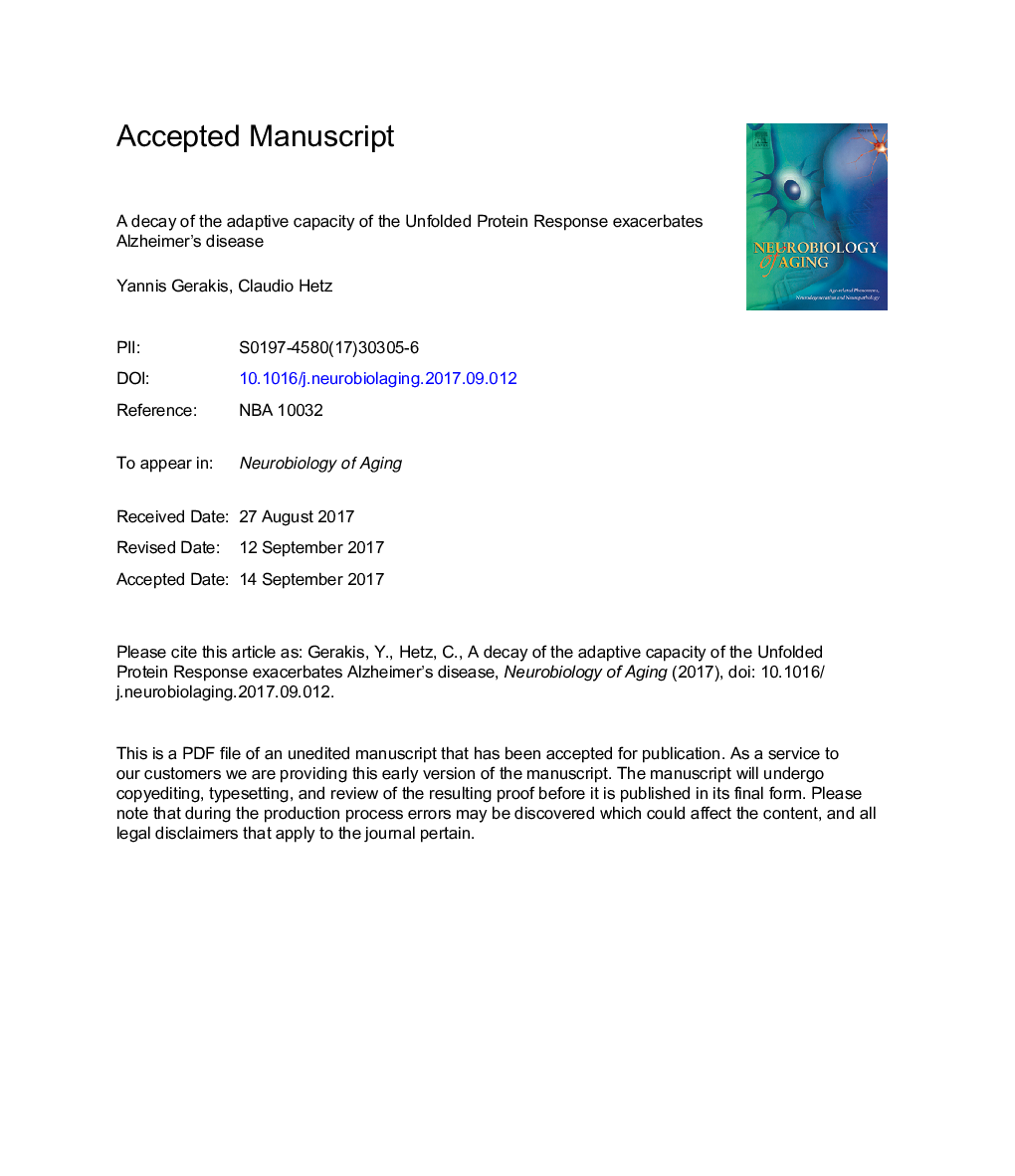| Article ID | Journal | Published Year | Pages | File Type |
|---|---|---|---|---|
| 6803086 | Neurobiology of Aging | 2018 | 10 Pages |
Abstract
Alterations in the buffering capacity of the proteostasis network are a salient feature of Alzheimer's disease, associated with the occurrence of chronic endoplasmic reticulum (ER) stress. To cope with ER stress, cells activate the unfolded protein response (UPR), a signal transduction pathway that enforces adaptive programs through the induction of transcription factors such as X-box binding protein 1 (XBP1). A new study by Marcora et al used a fly model to study amyloid β pathogenesis in the secretory pathway of neurons. Through genetic manipulation, authors identified a new role of XBP1s in the clearance of amyloid β and the improvement of neuronal function. However, although the activation of the UPR signaling was sustained over time, the transcriptional upregulation of XBP1-target genes was attenuated during aging. This study suggests that aging has a negative impact in the ability of the UPR to manage proteostasis alterations in Alzheimer's disease.
Related Topics
Life Sciences
Biochemistry, Genetics and Molecular Biology
Ageing
Authors
Yannis Gerakis, Claudio Hetz,
